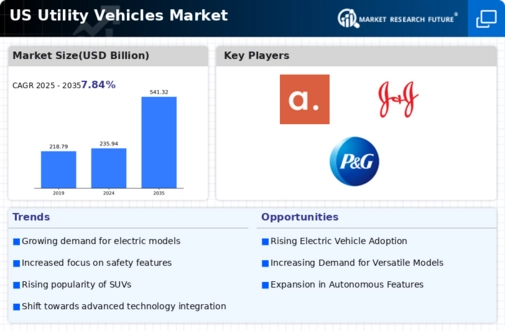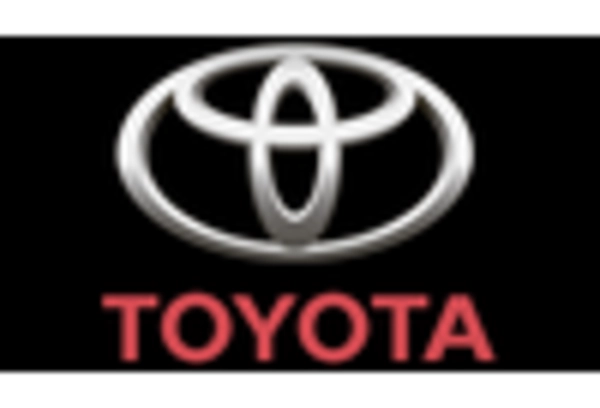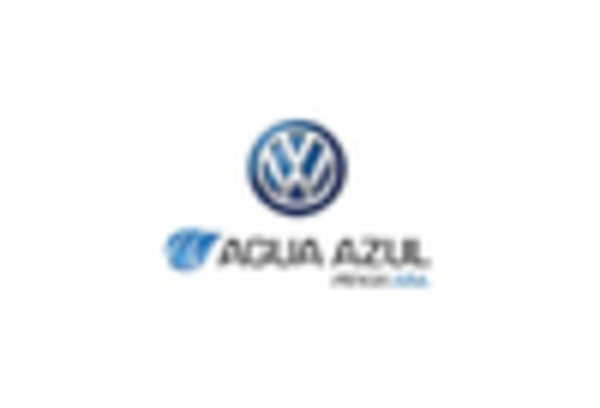Rising Demand for Versatile Vehicles
The utility vehicles market is experiencing a notable increase in demand for versatile vehicles that can serve multiple purposes. This trend is driven by consumers seeking vehicles that can accommodate both personal and commercial needs. In 2025, the market is projected to grow by approximately 8% as more individuals and businesses recognize the practicality of utility vehicles. The ability to transport goods, navigate various terrains, and provide ample passenger space makes these vehicles appealing. Additionally, the rise of e-commerce has led to a surge in demand for delivery vehicles, further propelling the utility vehicles market. As businesses adapt to changing logistics requirements, the versatility of utility vehicles becomes increasingly valuable.
Urbanization and Infrastructure Development
Urbanization is significantly influencing the utility vehicles market, particularly in metropolitan areas where infrastructure development is on the rise. As cities expand, the need for efficient transportation solutions becomes paramount. Utility vehicles, with their capacity to navigate urban environments and transport goods, are increasingly favored. In 2025, urban areas are expected to see a 10% increase in utility vehicle registrations, driven by the demand for last-mile delivery solutions and service vehicles. This trend indicates a shift in consumer behavior, as urban dwellers prioritize functionality and adaptability in their vehicle choices. Consequently, the utility vehicles market is poised to benefit from ongoing urban development initiatives.
Technological Integration in Utility Vehicles
The integration of advanced technologies in utility vehicles is reshaping the market landscape. Features such as telematics, advanced driver-assistance systems (ADAS), and connectivity options are becoming standard in new models. In 2025, it is projected that nearly 30% of utility vehicles sold will incorporate these technologies, enhancing safety and efficiency. This technological evolution not only appeals to tech-savvy consumers but also improves operational capabilities for businesses relying on utility vehicles. As manufacturers continue to innovate, the utility vehicles market is likely to see increased competition, with companies striving to offer cutting-edge features that meet the evolving demands of consumers.
Shift Towards Electrification of Utility Vehicles
The shift towards electrification is a transformative driver in the utility vehicles market. As battery technology advances and charging infrastructure expands, electric utility vehicles are gaining traction among consumers and businesses alike. In 2025, it is anticipated that electric utility vehicles will represent approximately 20% of total utility vehicle sales, reflecting a growing preference for sustainable transportation options. This trend is further supported by government policies promoting electric vehicle adoption, which may include incentives and funding for charging stations. The electrification of utility vehicles not only addresses environmental concerns but also offers long-term cost savings for users, making it a compelling driver in the market.
Government Incentives for Utility Vehicle Purchases
Government incentives play a crucial role in shaping the utility vehicles market. Various federal and state programs offer tax credits and rebates for consumers purchasing utility vehicles, particularly those with lower emissions. In 2025, it is estimated that these incentives could account for up to 15% of new utility vehicle sales. Such financial benefits encourage consumers to invest in utility vehicles, thereby stimulating market growth. Furthermore, as environmental regulations become more stringent, manufacturers are incentivized to produce cleaner, more efficient models. This dynamic not only supports the utility vehicles market but also aligns with broader sustainability goals, making it a pivotal driver in the industry.

















Leave a Comment